
How to Use Stereo FM module: Examples, Pinouts, and Specs
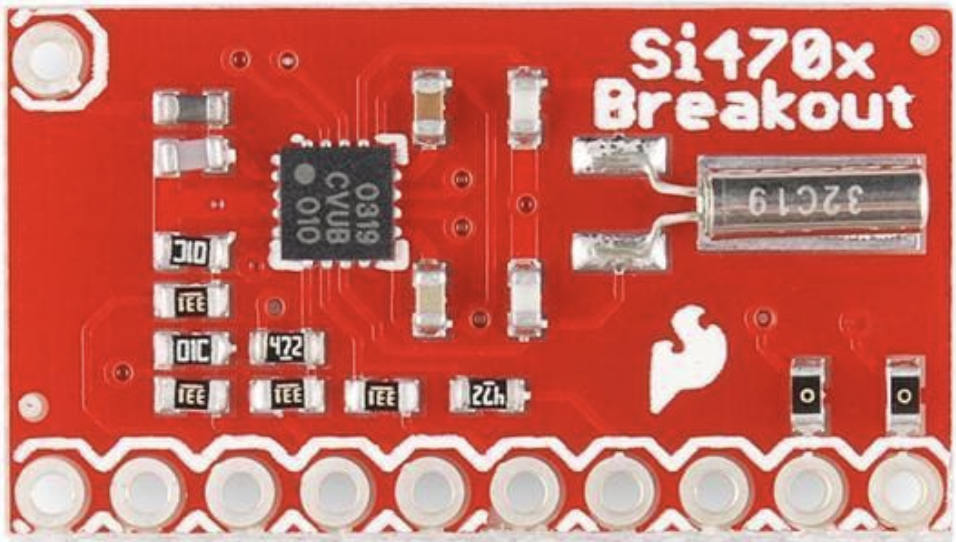
 Design with Stereo FM module in Cirkit Designer
Design with Stereo FM module in Cirkit DesignerIntroduction
The Stereo FM Module (Si470x Breakout) by SparkFun is a compact and versatile device designed to receive and decode FM radio signals, providing high-quality stereo audio output. This module integrates advanced features such as automatic frequency control, stereo decoding, and programmable settings, making it ideal for a wide range of applications.
Explore Projects Built with Stereo FM module
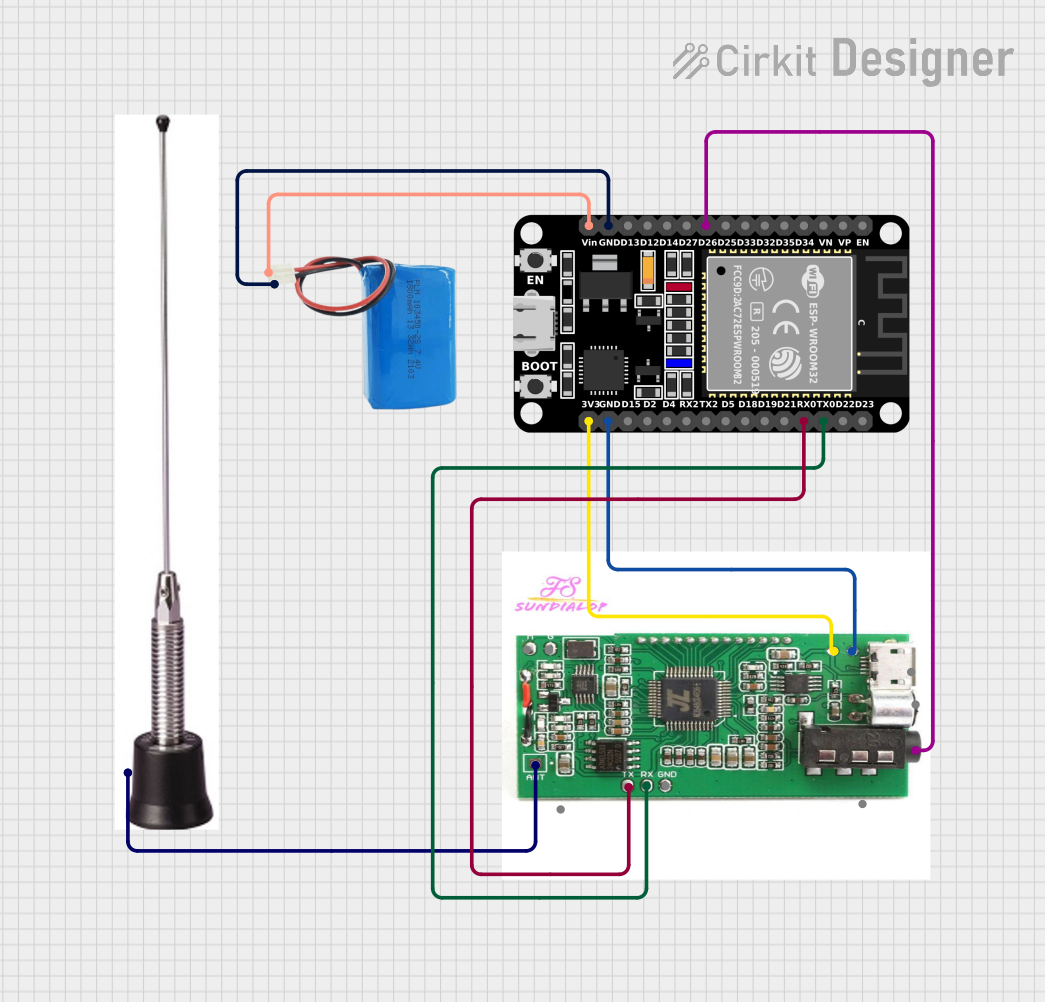
 Open Project in Cirkit Designer
Open Project in Cirkit Designer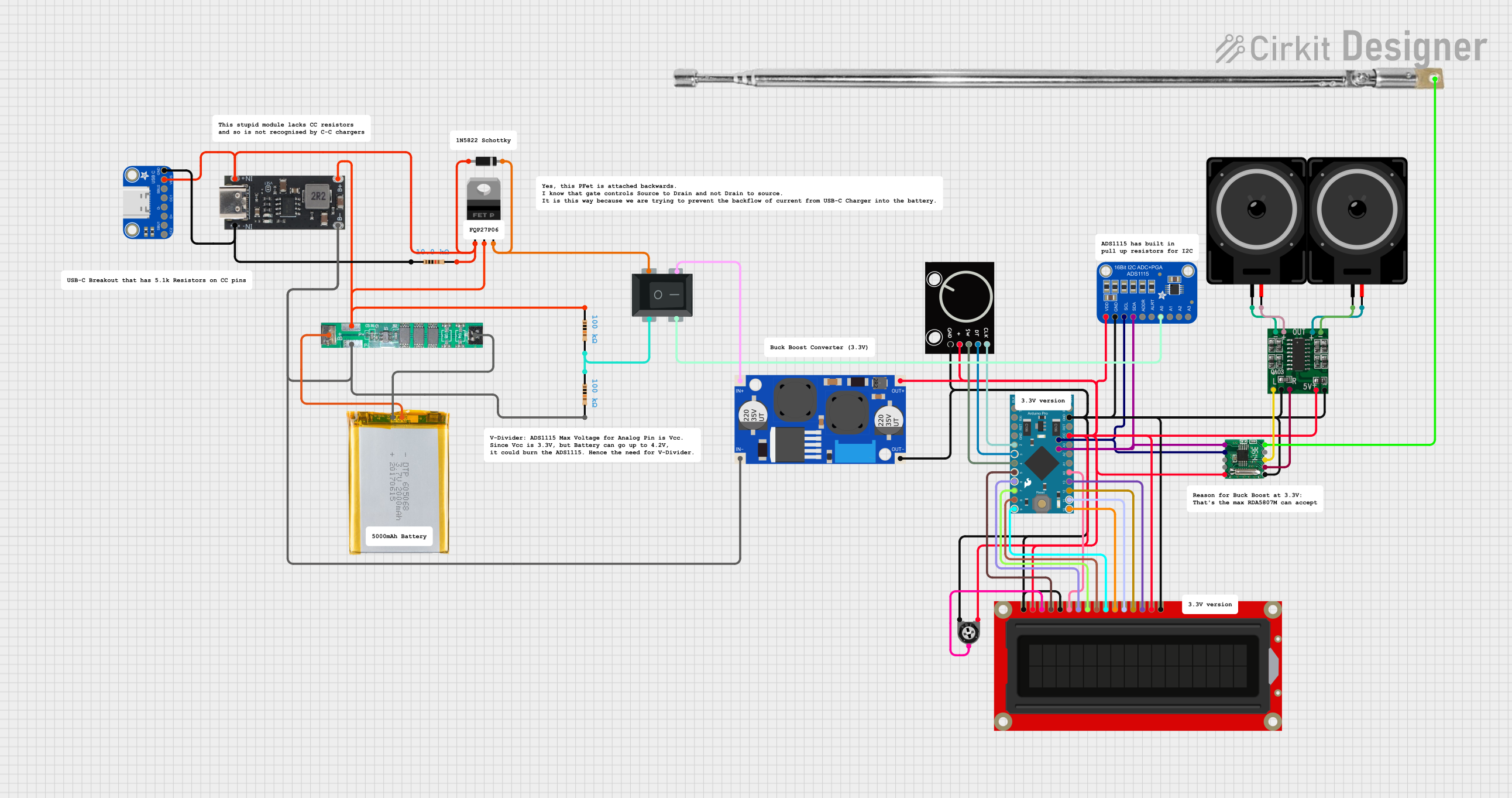
 Open Project in Cirkit Designer
Open Project in Cirkit Designer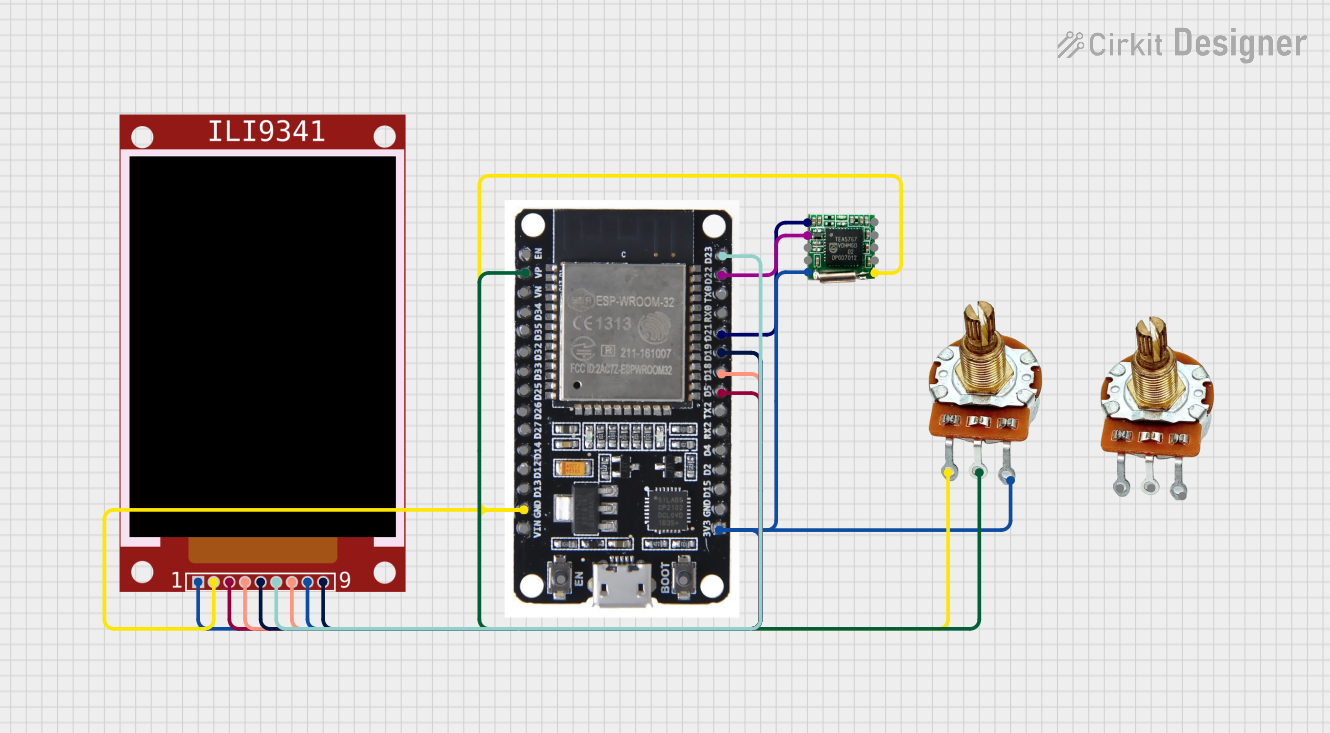
 Open Project in Cirkit Designer
Open Project in Cirkit Designer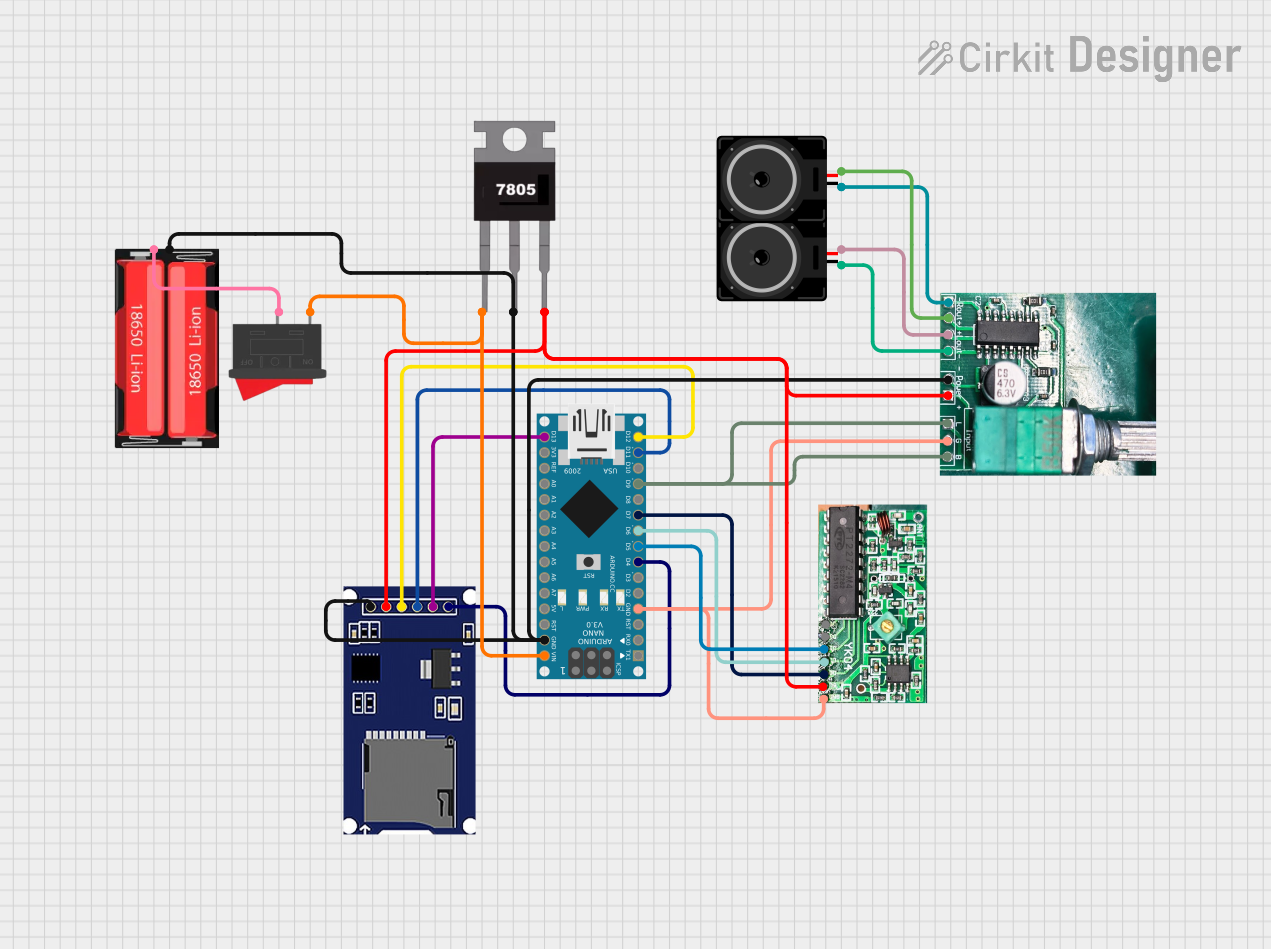
 Open Project in Cirkit Designer
Open Project in Cirkit DesignerExplore Projects Built with Stereo FM module

 Open Project in Cirkit Designer
Open Project in Cirkit Designer
 Open Project in Cirkit Designer
Open Project in Cirkit Designer
 Open Project in Cirkit Designer
Open Project in Cirkit Designer
 Open Project in Cirkit Designer
Open Project in Cirkit DesignerCommon Applications and Use Cases
- FM radio receivers for DIY electronics projects
- Portable audio systems
- Embedded systems requiring FM radio functionality
- Educational projects for learning about RF communication
- Internet of Things (IoT) devices with audio capabilities
Technical Specifications
The following table outlines the key technical details of the Si470x Breakout module:
| Parameter | Value |
|---|---|
| Operating Voltage | 2.7V to 5.5V |
| Operating Current | ~20 mA |
| Frequency Range | 76 MHz to 108 MHz |
| Audio Output | Stereo (Left and Right channels) |
| Communication Interface | I²C |
| Sensitivity | -110 dBm |
| Dimensions | 0.8" x 0.8" (20.3mm x 20.3mm) |
Pin Configuration and Descriptions
The Si470x Breakout module has the following pin layout:
| Pin | Name | Description |
|---|---|---|
| 1 | GND | Ground connection |
| 2 | 3.3V | Power supply input (3.3V recommended) |
| 3 | SDA | I²C data line for communication |
| 4 | SCL | I²C clock line for communication |
| 5 | RST | Reset pin (active low) |
| 6 | GPO1 | General-purpose output 1 (configurable) |
| 7 | GPO2 | General-purpose output 2 (configurable) |
| 8 | ANT | Antenna input for receiving FM signals |
| 9 | LOUT | Left audio output |
| 10 | ROUT | Right audio output |
Usage Instructions
How to Use the Component in a Circuit
- Power Supply: Connect the
3.3Vpin to a regulated 3.3V power source and theGNDpin to ground. - Antenna: Attach an external antenna to the
ANTpin for optimal FM signal reception. A simple wire of ~75 cm can work as an antenna. - Audio Output: Connect the
LOUTandROUTpins to an audio amplifier or headphones for stereo audio output. - I²C Communication: Use the
SDAandSCLpins to interface with a microcontroller (e.g., Arduino) for controlling the module. - Reset: Connect the
RSTpin to the microcontroller or a pull-up resistor to ensure proper initialization.
Important Considerations and Best Practices
- Use a decoupling capacitor (e.g., 0.1 µF) near the power supply pins to reduce noise.
- Ensure the antenna is properly positioned to maximize signal reception.
- Avoid placing the module near high-frequency noise sources, such as switching power supplies.
- Use pull-up resistors (typically 4.7 kΩ) on the
SDAandSCLlines for reliable I²C communication.
Example: Connecting to an Arduino UNO
Below is an example of how to use the Si470x Breakout module with an Arduino UNO to tune into an FM station:
Circuit Connections
3.3V→ Arduino3.3VGND→ ArduinoGNDSDA→ ArduinoA4SCL→ ArduinoA5RST→ Arduino digital pin2ANT→ External antenna (e.g., 75 cm wire)LOUTandROUT→ Audio amplifier or headphones
Arduino Code
#include <Wire.h>
#include <Si4703_Breakout.h> // Include the Si4703 library
#define RESET_PIN 2 // Define the reset pin
Si4703_Breakout radio; // Create an instance of the Si4703 class
void setup() {
pinMode(RESET_PIN, OUTPUT); // Set the reset pin as output
digitalWrite(RESET_PIN, LOW); // Hold the reset pin low
delay(1); // Wait for 1 ms
digitalWrite(RESET_PIN, HIGH); // Release the reset pin
Wire.begin(); // Initialize I²C communication
if (!radio.begin()) {
// If initialization fails, print an error message
Serial.println("Radio initialization failed!");
while (1); // Halt the program
}
radio.setFrequency(101.1); // Set the FM frequency to 101.1 MHz
Serial.begin(9600); // Start serial communication for debugging
Serial.println("Radio initialized and tuned to 101.1 MHz");
}
void loop() {
// The main loop can be used to adjust frequency or volume
}
Troubleshooting and FAQs
Common Issues and Solutions
No Audio Output:
- Ensure the
LOUTandROUTpins are connected to an audio amplifier or headphones. - Verify that the module is powered correctly and the antenna is connected.
- Ensure the
Poor Signal Reception:
- Check the antenna connection and ensure it is properly positioned.
- Move the module away from sources of electromagnetic interference.
I²C Communication Fails:
- Verify the
SDAandSCLconnections to the microcontroller. - Ensure pull-up resistors are present on the I²C lines.
- Verify the
Module Does Not Initialize:
- Check the
RSTpin connection and ensure it is properly toggled during startup. - Confirm that the power supply voltage is within the specified range.
- Check the
FAQs
Q: Can I use a 5V power supply with this module?
A: While the module can tolerate up to 5.5V, it is recommended to use a regulated 3.3V supply for optimal performance.
Q: What type of antenna should I use?
A: A simple wire antenna (~75 cm) works well for most applications. For better reception, you can use a telescopic antenna.
Q: Can I use this module with microcontrollers other than Arduino?
A: Yes, the module communicates via I²C, which is supported by most microcontrollers, including Raspberry Pi, ESP32, and STM32.
Q: How do I change the FM frequency?
A: Use the setFrequency() function in the provided library to tune to a specific frequency.
This concludes the documentation for the Stereo FM Module (Si470x Breakout).